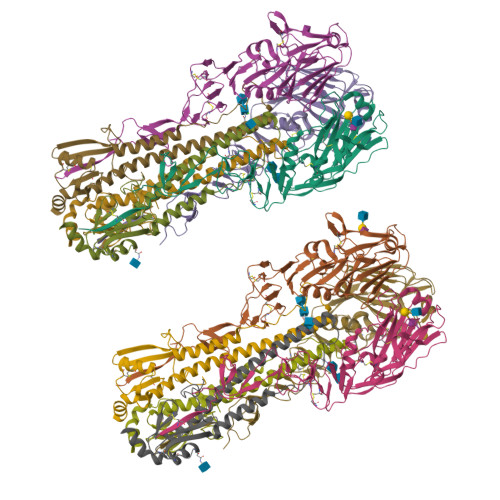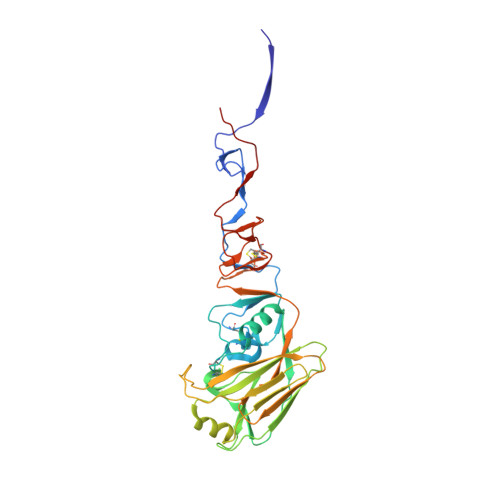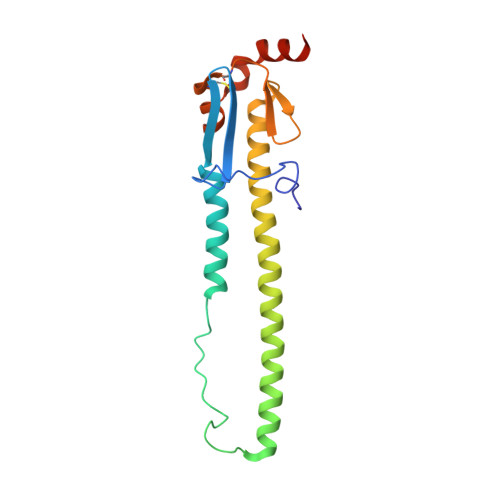Hemagglutinin Traits Determine Transmission of Avian A/H10N7 Influenza Virus between Mammals.
Herfst, S., Zhang, J., Richard, M., McBride, R., Lexmond, P., Bestebroer, T.M., Spronken, M.I.J., de Meulder, D., van den Brand, J.M., Rosu, M.E., Martin, S.R., Gamblin, S.J., Xiong, X., Peng, W., Bodewes, R., van der Vries, E., Osterhaus, A.D.M.E., Paulson, J.C., Skehel, J.J., Fouchier, R.A.M.(2020) Cell Host Microbe 28: 602-613.e7
- PubMed: 33031770
- DOI: https://doi.org/10.1016/j.chom.2020.08.011
- Primary Citation of Related Structures:
6TJW, 6TJY, 6TVA, 6TVB, 6TVC, 6TVD, 6TVF, 6TVR, 6TVS, 6TVT, 6TWH, 6TWI, 6TWS, 6TWV, 6TXO, 6TY1 - PubMed Abstract:
In 2014, an outbreak of avian A/H10N7 influenza virus occurred among seals along North-European coastal waters, significantly impacting seal populations. Here, we examine the cross-species transmission and mammalian adaptation of this influenza A virus, revealing changes in the hemagglutinin surface protein that increase stability and receptor binding. The seal A/H10N7 virus was aerosol or respiratory droplet transmissible between ferrets. Compared with avian H10 hemagglutinin, seal H10 hemagglutinin showed stronger binding to the human-type sialic acid receptor, with preferential binding to α2,6-linked sialic acids on long extended branches. In X-ray structures, changes in the 220-loop of the receptor-binding pocket caused similar interactions with human receptor as seen for pandemic strains. Two substitutions made seal H10 hemagglutinin more stable than avian H10 hemagglutinin and similar to human hemagglutinin. Consequently, identification of avian-origin influenza viruses across mammals appears critical to detect influenza A viruses posing a major threat to humans and other mammals.
Organizational Affiliation:
Department of Viroscience, Postgraduate School of Molecular Medicine, Erasmus MC University Medical Center, 3015GE, Rotterdam, the Netherlands.



























